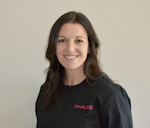A recap of this course from RDH Under One Roof 2023
Let’s jump into the facts surrounding hearing loss. Did you know that, according to the World Health Organization, by the year 2050 2.5 billion individuals might experience hearing loss?1 Currently, in the United States, about 48 million people are affected by varying degrees of hearing loss. This can occur in one or both ears and can range from mild to profound, affecting anyone regardless of age or background. Genetics, birth weight, chronic ear infections, birth complications, exposure to noise, infectious diseases, and aging can all contribute to hearing loss.1
Misconceptions and discrimination
It’s crucial to recognize that hearing loss is a disability that impacts people from all walks of life and across all age groups. Unfortunately, it often goes unnoticed or is misunderstood by others. There is a misconception that deafness is a binary condition—either you have full hearing or none—when in reality it exists on a spectrum of varying degrees that encompasses hearing loss through profound deafness, with levels of severity in between. Depending on preferences and factors such as lifestyle choices and cultural considerations, there are options available for individuals experiencing hearing loss.2 These options include the use of hearing aids, cochlear implants, bone-anchored hearing aids (BAHA), or nothing at all.
Audism refers to discrimination or prejudice against people who are deaf or hard of hearing. Audism can take many forms, such as the belief that someone's worth or intelligence is determined by their ability to hear.3 When referring to individuals who are deaf or hard of hearing, use of the term hearing-impaired is not considered appropriate since it implies that anything different from the standard of “hearing” is inferior or damaged.4 The deaf community prefers the terms deaf or hard of hearing. What you can do is ask how the person identifies. Using inclusive language can help create an environment of respect and empowerment.
The law and its solutions
The Americans with Disabilities Act (ADA) was signed into law more than 30 years ago on July 26, 1990.5 The ADA ensures opportunities for individuals with disabilities by protecting them from discrimination in aspects of public life.5 Many health-care providers are unaware of what the ADA is. This law prohibits any form of discrimination against people with disabilities in areas such as employment, education, transportation, public facilities, and telecommunications. Most importantly, the ADA requires employers to make accommodations for employees with disabilities, such as providing clear masks or other technology.5 The goal of the ADA is to ensure that individuals with disabilities can fully participate in society and realize their potential. But we still have a long way to go.
Since COVID-19, masks have become a part of our daily lives. However, traditional masks can pose challenges for those who rely on lipreading or facial expressions to communicate effectively. Transparent panels on masks allow visibility of the mouth and lips, making it easier for individuals who are deaf or hard of hearing as well as those with autism or other communication disorders to comprehend spoken words. Two well-known brands of clear masks are Safe’N’Clear and ClearMask.6,7 These masks have been designed to comply with the ADA and the Affordable Care Act (ACA). These acts require organizations to offer accommodations such as aid upon request.5 We can prioritize safety without sacrificing communication to ensure everyone has access to the tools they need to communicate.
Resources include access to an interpreter. Reach out to your specific state for referrals. The Registry of Interpreters for the Deaf maintains a database that you can utilize.8 Another option is to contact your chapter of the National Association of the Deaf for assistance.9 If a patient finds it necessary to have an interpreter to understand what the doctor or health-care provider is communicating, the dental practice is legally obligated to provide one.
It’s important to remember that our decisions have consequences, and we should take responsibility for them. We should be aware of how our choices affect others and consider their perspectives before making decisions. As health-care professionals, we can have a positive impact on the world. Inclusion is important as everyone deserves a voice.
Editor's note: This article appeared in the July 2024 print edition of RDH magazine. Dental hygienists in North America are eligible for a complimentary print subscription. Sign up here.
References
- Deafness and hearing loss. World Health Organization (WHO). February 2. 2024. Accessed January 3, 2024. https://www.who.int/news-room/fact-sheets/detail/deafness-and-hearing-loss
- Reid S. Hearing loss and mental health. HelpGuide.org. Updated April 29, 2024. Accessed January 12, 2024. https://www.helpguide.org/articles/illness-disability/hearing-and-mental-health.htm
- Dirksen H, Bauman L. Audism: exploring the metaphysics of oppression. J Deaf Stud Deaf Educ. 2024;9(2):239-246. doi:10.1093/deafed/enh025
- AB 1709 Assembly Bill. Bill Analysis. Senate Judiciary Committee. April 28, 2016. Hearing date June 14, 2016. Accessed January 10, 2024. http://www.leginfo.ca.gov/pub/15-16/bill/asm/ab_1701-1750/ab_1709_cfa_20160613_144649_sen_comm.html
- Americans with Disabilities Act of 1990, As Amended. ADA.gov. U.S. Department of Justice Civil Rights Division. Accessed January 25, 2024. https://www.ada.gov/law-and-regs/ada/
- See the person, not the mask. ClearMask. Accessed January 25, 2024. https://www.theclearmask.com/
- The Communicator clear face mask. The first FDA approved mask with a clear window made in the USA. Safe’N’Clear. Accessed January 25, 2024. https://safenclear.com/
- Registry of Interpreters for the Deaf, Inc. Accessed January 10, 2024. https://rid.org/
- Deaf interpreters directory. National Association of the Deaf. Accessed January 25, 2024. https://www.nad.org/deaf-interpreters-directory/









